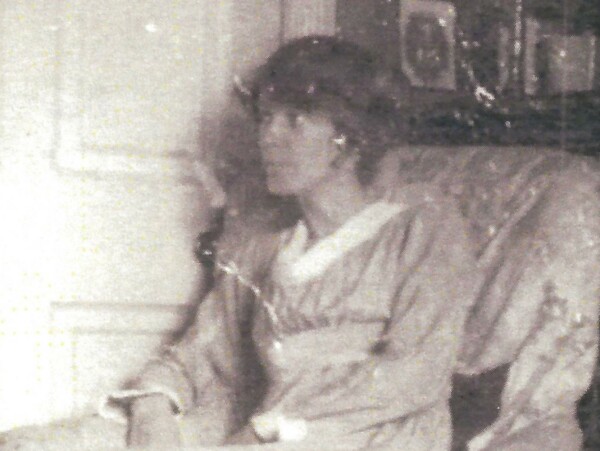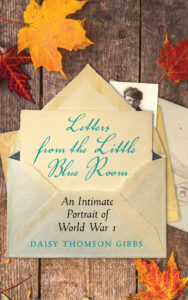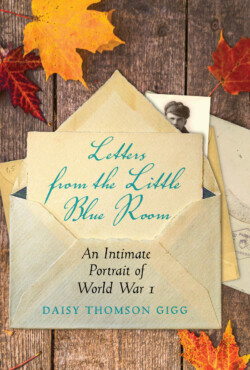Rediscovering, and sharing, a major Scottish-American writer and her book
October 6, 2024

Key to the small publishing house I run, Barbican Press, is sharing my private reading passions. ‘This book is so special EVERYONE should read it.’
That approach takes a new turn this month – our newly released book is old and the writer is long since dead.
I came across it in the rare books room of the British Library, a tangential find while researching treatment for Canadians wounded in World War I.
The book is Letters from the Little Blue Room and its author was anonymous. Its accession stamp says January 1917. The writer’s direct and appealing voice struck me at once. These are letters from a Scottish woman to her younger brother, who emigrated to Scotland and is returning to fight in the Great War. The first letter is dated August 2nd, 1914, weeks before war is declared, addressed to Dear Boy:
I came very near to heading this letter “Slough of Despond” instead of “Blue Room”. Why? Because, look you, we are back in town again, after one of the most glorious holidays we have ever spent in any summer …
 A sister is writing to her brother, but in a way that speaks directly to any reader. The town she is writing from (anonymous in the book) is Dunfermline, which as home to the Black Watch regiment was pivotal to the war. The letters bring a gradual unveiling of that war in an account that is personal, touching, and often funny as she works to keep up her brother’s spirits. It is a wonderfully revealing account of life on the home front and the wartime role played by women.
A sister is writing to her brother, but in a way that speaks directly to any reader. The town she is writing from (anonymous in the book) is Dunfermline, which as home to the Black Watch regiment was pivotal to the war. The letters bring a gradual unveiling of that war in an account that is personal, touching, and often funny as she works to keep up her brother’s spirits. It is a wonderfully revealing account of life on the home front and the wartime role played by women.
That reading room experience came fourteen years ago. The book’s dedication gives the military numbers and regiments to her two brothers. From those I discovered a brother’s namesand an address, the home of the ‘little blue room’ from which the letters came, and so the name of their writer.
She was christened Margaret Thomson. Her family called her Daisy, and she later took the married name of Gigg – in bringing her story out of anonymity I am publishing it as by Daisy Thomson Gigg. Pursuing details on ancestry.co.uk showed someone else actively researching the family: a man who is the grandson of ‘Boy’, the brother. I then corresponded with other grandchildren, including Daisy’s granddaughter, to discover the true family backstory that underpins the tale.
The book becomes extremely moving – I sat tearful when first completing it.
I found my own copy and had it scanned. Next step was cleaning the text. The family story that underpins the book and reaches beyond the book’s timeframe is equally dramatic and affecting to the one the book recounts. Family photographs add their own power to the book, and I raided eBay for period photographs of Dunfermline and the Winnipeg Rifles. 108 endnotes explain and develop some of Daisy’s refences. My closing biography tells Daisy’s family story, while Angela Smith’s foreword sets the book in its literary context: “Compelling. A new and unique voice and an important addition to the canon of literature of the First World War.”
Daisy was a suffragette and a pacifist but moves beyond both those admirable qualities because she is a writer: she gives us the human condition.
The book is a literary gem, it rediscovers a major Scottish (and Scottish-American) writer, and as our world shifts back toward states of war it couldn’t be more relevant.
I’ve made it available. Now I hope readers find it and tell their friends. Please do!


